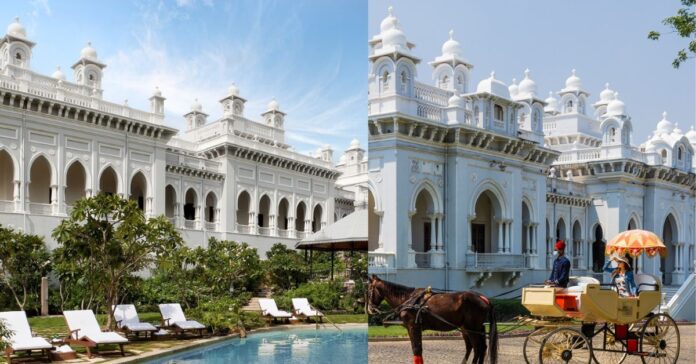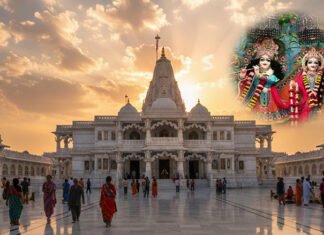Introduction:
Hyderabad, the “City of Pearls,” boasts a rich tapestry Hyderabad of history, culture, and architectural marvels. From the Qutb Shahi tombs whispering tales of bygone dynasties to the majestic Charminar standing tall as a symbol of the city, heritage buildings in Hyderabad offer a captivating glimpse into its glorious past. This comprehensive guide explores the top 10 heritage structures in Hyderabad, delving into their historical significance, architectural brilliance, and captivating stories.
1. Charminar:
History:
Built in 1591 by Sultan Muhammad Quli Qutb Shah, the Charminar is an iconic landmark that defines heritage buildings in Hyderabad skyline. The monument was commissioned to commemorate the eradication of the plague and serves as a mosque.
Architecture:
This four-minareted structure, built in Indo-Islamic style, boasts a blend of Persian and Deccan architecture. The four arches on each facade represent the four caliphs of Islam. Intricate carvings, floral motifs, and calligraphy adorn the monument, showcasing the artistic excellence of the era.
Significance:
The Charminar stands as a symbol of Hyderabad and a testament to the city’s rich cultural heritage. It’s a bustling marketplace at its base, offering a vibrant experience to visitors.
Also Read : Charminar: A Symbol of Hyderabad’s Rich Culture and History
2. Golconda Fort:
History:
Once the seat of the Qutb Shahi dynasty (1518-1687), Golconda Fort is an imposing structure perched atop a 120-meter granite hill. Renowned for its architectural brilliance and ingenious defense mechanisms, the fort was once considered impregnable.
Architecture:
The fort comprises multiple fortified gateways, ingenious water harvesting systems, and elaborate palaces. The strategic use of granite and ingenious acoustic engineering are noteworthy features. The famous Koh-i-Noor diamond was once mined here.
Significance:
Golconda Fort narrates the story of a powerful kingdom and showcases the architectural prowess of the Qutb Shahi dynasty. The light and sound show held here evenings brings the fort’s history to life.
3. Qutb Shahi Tombs:
History:
Located near Golconda Fort, the Qutb Shahi Tombs are a cluster of mausoleums built by the Qutb Shahi rulers. Each tomb is a unique architectural marvel, showcasing the evolution of the dynasty’s style.
Architecture:
The tombs, built in the Deccan style, are constructed using granite with intricate stucco embellishments. The tombs progressively decrease in size, reflecting the declining power of the dynasty. The tombs of Muhammad Quli Qutb Shah and Hyder Mahal are particularly noteworthy.
Significance:
The Qutb Shahi Tombs offer a poignant glimpse into the lives and legacies of the Qutb Shahi rulers. The serene atmosphere and architectural beauty make it a must-visit for history and architecture enthusiasts.
4. Chowmahalla Palace :
History:
Spread over 5 acres, the Chowmahalla Palace served as the seat of the Asaf Jahi dynasty (1724-1948) for over 200 years. The palace complex comprises four distinct palaces, each showcasing a unique architectural style.
Architecture:
The palaces blend Indian, Persian, and European architectural influences. The intricate stuccowork, ornate courtyards, and grand halls reflect the opulence of the Asaf Jahi court. The Clock Tower, built in the European style, is a prominent landmark.
Significance:
Chowmahalla Palace offers a glimpse into the grandeur and lifestyle of the Nizams of Hyderabad. The palace complex houses a museum showcasing artifacts and memorabilia from the Asaf Jahi dynasty.
Also Read: Hyderabad Chowmahalla Palace: A Journey of the History
5. Mecca Masjid:
History:
Built in the 17th century by Mughal emperor Aurangzeb, Mecca Masjid is one of the largest mosques in India. The mosque was modeled after the Great Mosque of Mecca and is a testament to the city’s rich religious .heritage buildings in Hyderabad
Architecture:
The architectural style reflects Mughal influences, with large courtyards, towering arches, and a grand facade. The mosque’s central hall is adorned with intricate calligraphy and floral motifs.
Significance:
Mecca Masjid is a center of religious significance for Hyderabad’s Muslim community. Its architectural grandeur and serene atmosphere make it a place of worship and cultural importance.
6. Purani Haveli (Paigah Haveli) :
History:
Built in the 18th century by the Paigah family, a prominent noble family under the Asaf Jahi dynasty, Purani Haveli is a sprawling mansion showcasing a blend of architectural styles.
Architecture:
The haveli reflects a unique fusion of Mughal and Deccani styles. Intricate stuccowork, ornate balconies, and spacious courtyards characterize this architectural gem. The haveli’s wind towers (known as ‘badgirs’) and water harvesting systems showcase the ingenuity of the era.
Significance:
Purani Haveli offers a glimpse into the lives of Hyderabad’s nobility and their architectural preferences. The haveli is currently undergoing restoration and is expected to open as a museum in the near future.
7. Taramati Baradari :
History:
Built in the 17th century by Hayat Bakshi Begum, a royal consort of a Qutb Shahi ruler, Taramati Baradari served as a pleasure pavilion. Located on the banks of the Musi River, the structure offered a tranquil escape for the royals.
Architecture:
The structure resembles a twelve- pillared pavilion built in the Qutb Shahi architectural style. The intricate carvings, geometric patterns, and use of local materials add to its charm.
Significance:
Taramati Baradari reflects the architectural legacy of the Qutb Shahi dynasty and offers a glimpse into the leisure pursuits of Hyderabad’s royalty. The serene location and picturesque views make it a popular spot for picnics and photography.
8. Toli Masjid :
History:
Built in the 17th century by Mir Momin, a Qutb Shahi minister, Toli Masjid derives its name from the resemblance of its domes to pearls.
Architecture:
The mosque showcases a unique architectural style, blending Persian and Deccan influences. The use of white stucco and intricate floral patterns creates a mesmerizing effect. The intricate calligraphy inscriptions on the facade add to its beauty.
Significance:
Toli Masjid stands as a testament to the architectural experimentation during the Qutb Shahi period. Its unique design and serene atmosphere make it a hidden gem in Hyderabad’s heritage landscape.
9. Spanish Mosque (Jamia Masjid Begumpet) :
History:
Built in the early 1900s by Nawab Shah Nawaz Jung, the Spanish Mosque is a unique structure inspired by Spanish and Moorish architecture.
Architecture:
The mosque deviates from the traditional Mughal and Deccan styles prevalent inheritage buildings in Hyderabad . It features a horseshoe-shaped archway, a central dome with ribbed detailing, and a minaret resembling a European tower. This unique blend of styles makes it a captivating landmark.
Significance:
The Spanish Mosque stands as a testament to the architectural influences that shaped heritage buildings in Hyderabad beyond the traditional styles. It’s a reminder of the city’s openness to diverse artistic expressions.
10. Falaknuma Palace:
History:
Built in the late 19th century by Asaf Jah V, the last Nizam of Hyderabad, Falaknuma Palace is a breathtaking example of opulence and architectural grandeur. Inspired by the Palace of Versailles, it was once the Nizam’s residence and is now a luxurious hotel.
Also Read: Ultimate Guide to Adventure Places in Hyderabad: A Three-Day Itinerary
Architecture:
The palace reflects a blend of Italian and Tudor architectural styles. The grand Italian marble staircase, the intricately carved ceilings, and the Belgian crystal chandeliers showcase the palace’s magnificence. The Nizam’s collection of artifacts, furniture, and artworks add to its historical significance.
Significance:
Falaknuma Palace stands as a symbol of the last Nizam’s reign and his pursuit of a luxurious lifestyle. It offers a glimpse into the opulent world of the Hyderabadi royalty and serves as a popular tourist destination.
Conclusion:
heritage buildings in Hyderabad are a captivating window into the city’s rich tapestry of history, culture, and architectural brilliance. From the iconic Charminar to the serene Taramati Baradari, each structure tells a unique story waiting to be explored. This list provides a starting point for your exploration.
Delve deeper into the history of these magnificent structures, and embark on a journey through time as you explore Hyderabad’s heritage treasures.
Frequently Asked Questions:
Charminar, built in 1591, commemorates the eradication of a plague and represents Hyderabad’s cultural heritage with its blend of Persian and Deccan architecture.
Golconda Fort is renowned for its robust defense mechanisms, strategic granite construction, and ingenious acoustic engineering.
The Qutb Shahi Tombs, near Golconda Fort, are a cluster of mausoleums showcasing the evolution of the Qutb Shahi dynasty’s architectural style in the Deccan region.
Chowmahalla Palace blends Indian, Persian, and European influences, featuring intricate stuccowork, ornate courtyards, and grand halls that reflect the Nizams’ opulence.
The Spanish Mosque incorporates Spanish and Moorish architectural elements, with a unique design including a horseshoe-shaped archway and a European-style minaret.











